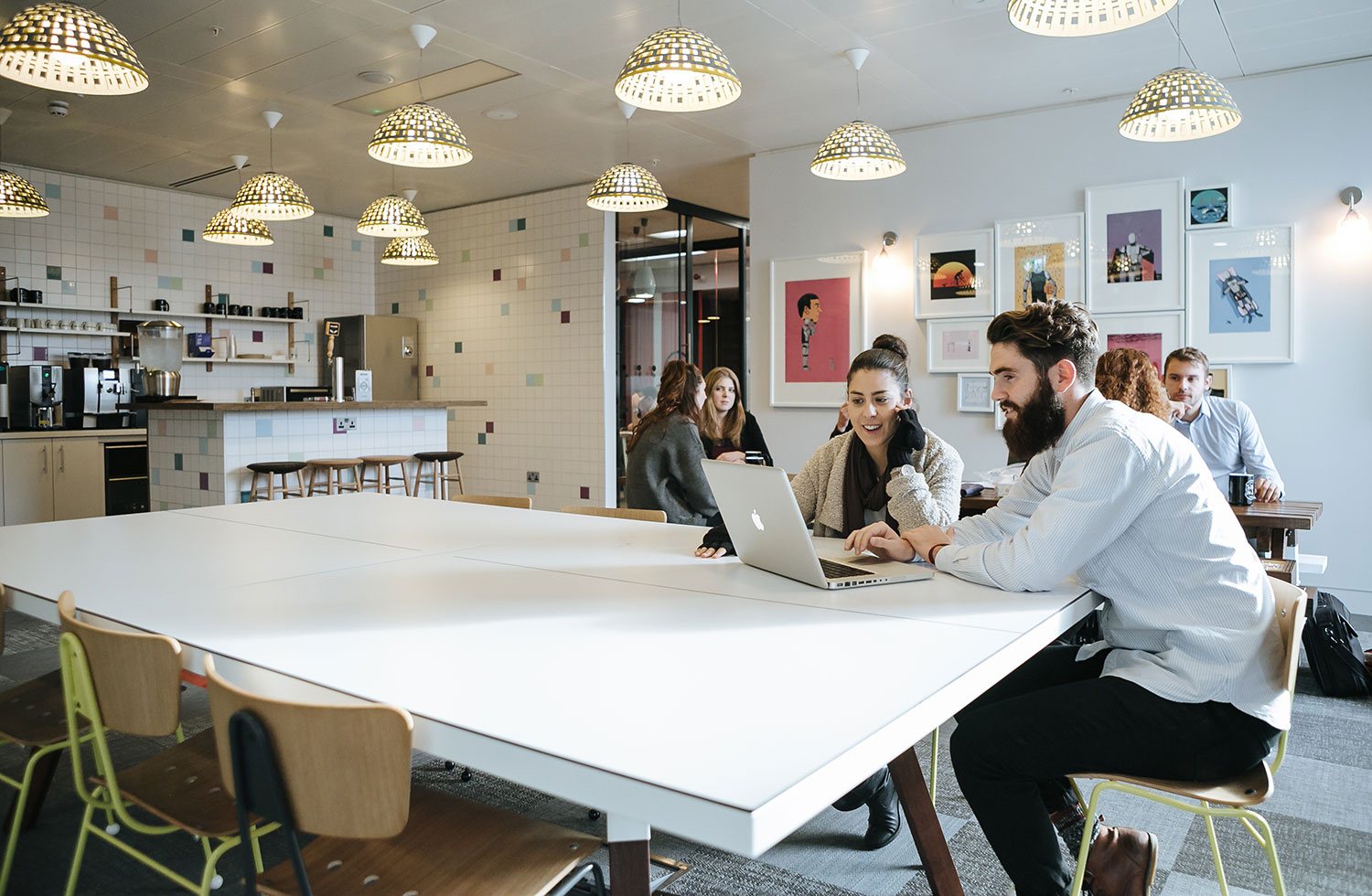Millennials are reshaping modern workplaces. In fact, they’ve ushered in a boom for tenant improvement projects in the Los Angeles area. Modern office spaces are opening up. They’re resembling co-work spaces or coffee shops more than yesterday’s traditional office. Big desks and row after row of filing cabinets are gone. Replaced by communal work bars, community desks with benches, lounge chairs, and couches. Cubicle partitions are being taken down or shortened with ear buds now the sound blocker of choice. At the core of these changes are promises of greater interaction, collaboration, and camaraderie amongst employees. But what are some of the other reasons behind this shift in office design? And what do these changes mean to owners of commercial office spaces? Let’s take a closer look.
An Employee’s Laptop Has Become His or Her Work Station
One catalyst of recent changes is the fact that today’s office worker needs less space to carry out his or her job duties than yesterday’s employee. Laptops and employee mobility have office workers today requiring less square footage than ever before. 151 square feet was the average square footage per employee in 2017. This is a drop from 176 square feet in 2012, which was already a significant drop off from 225 square feet in 2010. Many companies project to allow just 100 to 120 square feet per employee by 2020.
What’s causing all this? Everything today’s employee needs to perform his or her day-to-day job duties basically sits on their laptop. This includes everything from their files (goodbye file cabinets) and company documents to work-critical apps, and software. There’s no longer a need for a space consuming desktop PC. Another space consuming part of the traditional office desk was the telephone. Now people are more likely to use their cellphones than a desktop phone. Even family pictures, a one-time staple of office desks, can now be the screensaver of someone’s laptop.
Some Cost-Conscious Employers See Less Employee Space as a Means to Save Money
Office space rent amounts are rising throughout Southern California. Trimming personal space can be cost effective for companies just starting out or struggling to turn a profit. Companies are moving into workspaces that are anywhere from 20% to 25% smaller than the office they’re moving from. Why? To pay a lower monthly rent. Smaller but smarter offices are all the rage right now.
Of course, the problem with such a downgrade is employees are basically being shoehorned into cramped spaces. Some office workers today may have as little as 95 square feet to themselves. This means a lack of privacy and comfortability. This is why many baby boomers, Gen X’ers, and even a few millennials aren’t very keen on communal workspaces anymore. They’ve been there, tried that, and didn’t like it.
However, the truth is wide-open office spaces are most likely here to stay. That said, there are some indicators that today’s worker wants more than an open floor plan and communal work spaces. They want a space that’s spacious enough for options. For instance, have your communal area but also have phone booths for private calls, quiet refuge rooms, private collaborative/meeting areas, gaming areas, coffee bars, fitness rooms, or even a nap area.
How Does This Impact Landlords of Office Spaces or Buildings?
The millennial office is very real. The sooner anyone renting or leasing an office space realizes this, the better off they’ll be. Today’s prospective tenant and their employees want an environment that’s laid back, relaxed, open and airy. You need to reassure them that your space, regardless of what it looks like now, can provide this through customization and tenant improvements.
So many office spaces today still look as if they’re stuck in some eighties or nineties time warp. If your office space looks like the set of the 1999 movie Office Space, a prospective tenant needs to know it can be customized to their liking and to accommodate their specific needs.
Unless you want an empty space, it’s vital that you find yourself a general contractor or commercial construction company specializing in office tenant improvements. Partnering with a builder that’s aware of what current office trends are – as well as where they’re headed – will ensure you’re on top of the game when it comes to landing and locking in office tenants.

